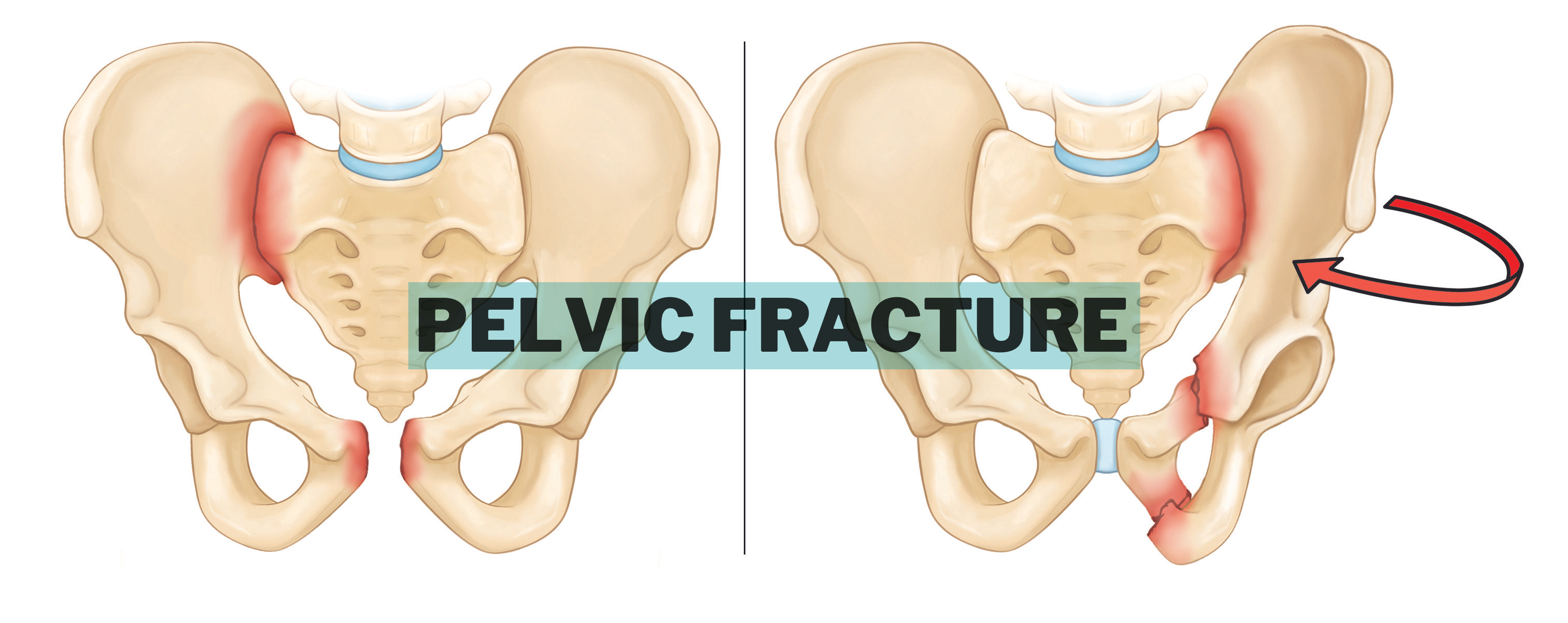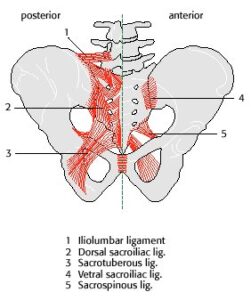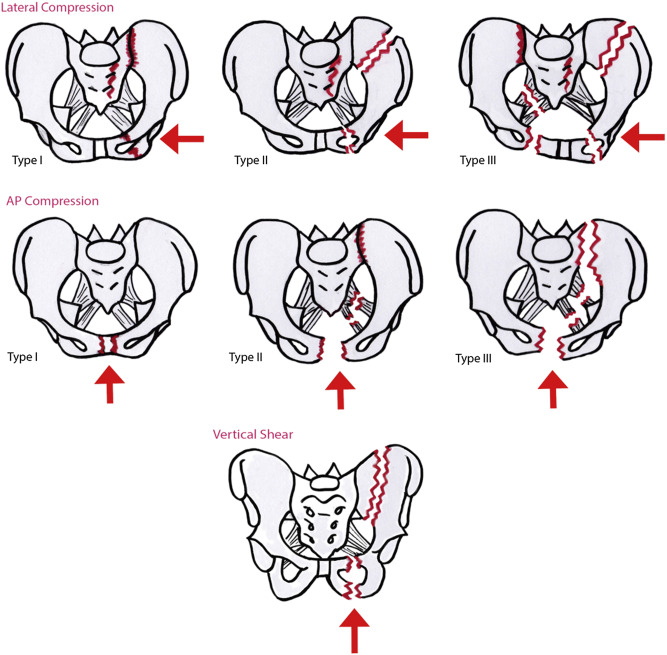Anatomy:
A pelvic fracture is a disruption of the bony structures of the Pelvis. The pelvic is a ring made up of two innominate bones in the sacrum. The innominate bones are joint anteriorly at the pubic symphysis- a synchondrosis and posteriorly at the sacroiliac joints.
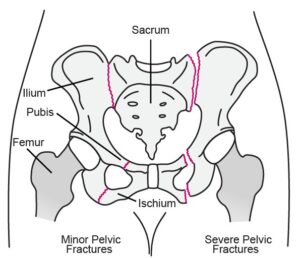
The innominate bone is composed of three bones that fuse in adolescence. Those bones are the ilium, ischium, and pubis bones.
The pelvis opens up in two places when it breaks.
Many important vascular structures lie in close proximity to the pelvic bones. There is a rich venous plexus that is responsible for much of the bleeding that is seen with public fractures.
In addition to the venous plexus, there are numerous branches of the internal iliac artery that may be injured by displaced bone fragments.
Stability of the Pelvis:
The sacroiliac joint has posterior ligaments that are very strong and the stability of the pelvis depends on the integrity of the posterior weight-bearing Sacroiliac joint complex. Transfer of weight-bearing forces from the spine to the lower extremities.
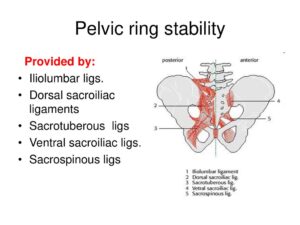
The pelvis is a ring. When a force occurs between the injured ring in the front and the back that is anterior injury and posterior injury.
Anterior Injury:
- Anterior injury is obvious.
- Usually noted on radiographs.
- Usually associated with posterior injury or fracture.
Posterior Injury:
- Could be occult.
- Always look at the back of the pelvis
- An unstable pelvis will have a gap or comminution.
The posterior fracture is serious. For that, it needs a significant blood transfusion, needs surgery, and unpredictable outcomes.
Posterior fracture with disruption of the posterior ring complex is a serious injury as it leads to instability of the pelvis and can cause profuse bleeding.
The resultant instability if not fixed surgically can cause late deformity, limb length discrepancy, and pain.
Types of Pelvic Fractures:
1. Lateral Compression (LC):
- The lateral compression type 1 starts with the simple fracture type and then it gets complicated. The simple type will be an impacted sacrum and maybe the pubic rami will have transverse or oblique fractures.
- The best example of lateral compression is the crescent fracture and which is considered to be Type 2. If the force does not involve the bone for the crescent fracture, it is going to involve the posterior tension band ligaments. The fracture will be unstable to internal rotation.
- In Type 3, you will have lateral compression fracture on one side and anteroposterior compression on the other side. One of the iliac crests will be in internal rotation and the other side will be in external rotation. It is a roll-over injury or a windswept pelvic.
2. Anterior Posterior Compression (APC):
- If the symphysis pubic is open, it will be less than 2.5 cm opening because Type 1 is small and insignificant. Because it did not open a lot, the ligaments are still holding and it is rotationally and vertically stable.
- In Type 2, the symphysis pubis will be open with injury to the sacrospinous and sacrotuberous ligaments (STL). In type 2, the symphysis pubic will be opened more than 2.5 cm and the anterior sacroiliac joint ligament will be injured. So, the pelvis becomes rotationally unstable, but it is vertically stable.
- This is the important type for open book fractures Type 3, and if you rupture these posterior ligaments, the pelvis becomes unstable rotationally and vertically. All of the ligaments are gone and the pelvis is totally unstable. The anterior-posterior compression type 3 is associated with the highest blood transfusion requirements and shock.
3. Vertical Shear (VS):
- In the vertical shear fracture, all of the ligaments are disrupted and it is rotationally and vertically unstable.
- In the vertical shear fracture, the patient will also lose a lot of blood.
For more information talk to a healthcare provider.
If you have any questions about Pelvic fracture, please feel free and leave a comment.
Do share this blog with your friends and family!


